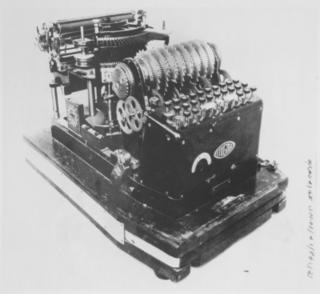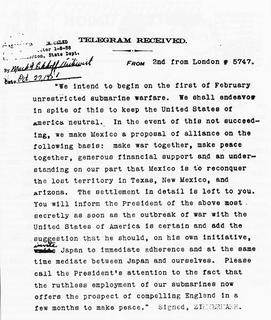
The German military versions of the
Enigma are well-known because of the historical significance of their decipherment during World War II. However, there are some other lesser-known commercial versions of Enigma, and a remarkable example of one of these is on display in a museum in Budapest (
first picture, courtesy Eric Tischer). While the standard German military model had 3 rotors, and even the high-security M4 machine used on U-boat networks had 4 rotors, this rare early Enigma model had no less than 8 rotors.
A paper by Louis Kruh and Cipher Deavours (
"The Commercial Enigma: Beginnings of Machine Cryptography," Cryptologia, 26(1), pp. 1–16, 2002) includes a copy of a flier for this machine, titled "The Printing Enigma". This machine, which dates from the 1920s, is distinct from two other large and bulky early commercial Enigma variants (models A and B)

According to the flyer, the machine weighed about 50kg, and measured 65cm by 45cm by 35cm (length, width and height). It printed "the plaintext in original form with letters, numbers, punctuation, word divisions". I presume it did this using a figure shift mechanism, rather than having rotors with a large number of contacts, as that the rotors seem to be labelled A-Z. The machine also printed the ciphertext into rows of 50 and groups of 5 letters. There's not much information on it cryptographically, other than the somewhat obscure claims that it had "17,576 periods / each period is 15,777,450 symbols" and that "any one of the 227,304,461,200 can be input in half a minute".
If anyone has any more information about this machine, I would love to hear about it. I'd also be interested to know the translations of the words on the large keys, which seem to be labelled
"Ziffernu Zechen Zwischenraum" and
"Buchstaben Zwischenraum".




